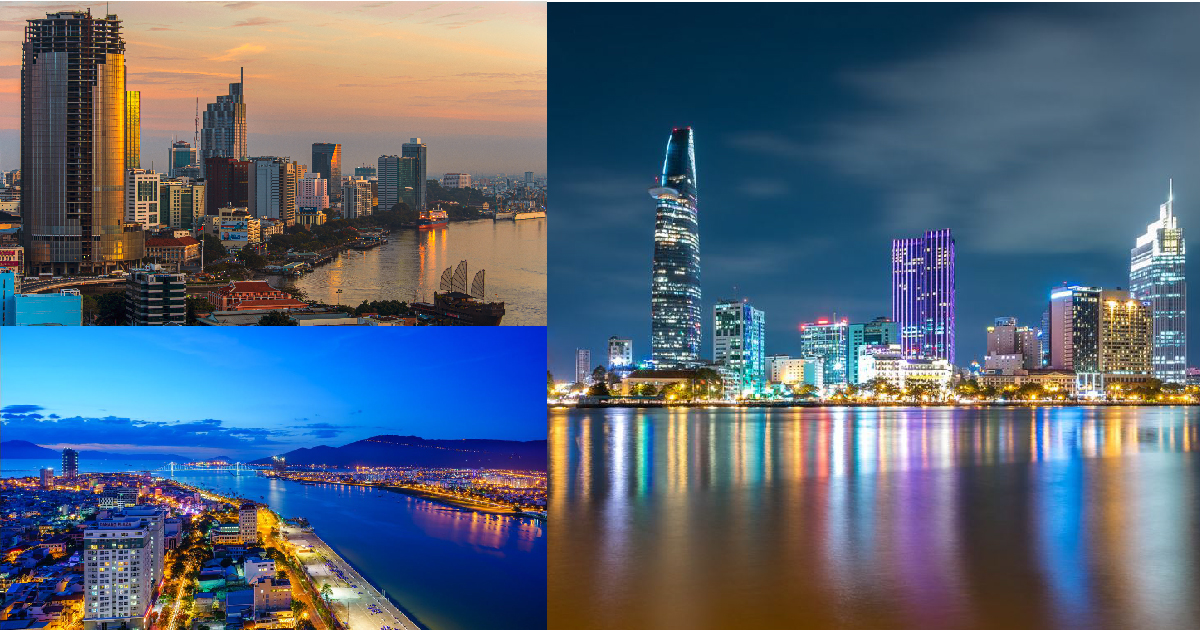មហាសំណង់ Mukaab ដែលជាអគារធំនិងខ្ពស់បំផុតលើលោក បើកដំណើរការសាងសង់នៅអារ៉ាប៊ីសាអ៊ូឌីត
មហាសំណង់អគារ Mukaab កម្ពស់ ៤០០ ម៉ែត្រក្នុងទីក្រុង Riyadh នៃប្រទេសអារ៉ាប៊ីសាអ៊ូឌីត ដែលនឹងក្លាយជាអគារធំជាងគេលើលោក ពេលនេះ បានចាប់ផ្តើមដំណើរការសាងសង់ហើយ ខណៈការងារជីកកកាយគ្រឹះបានបញ្ចប់ ៨៦ភាគរយ នេះបើយោងតាមការប្រកាសរបស់ក្រុមហ៊ុនអភិវឌ្ឍន៍ New Murabba គាំទ្រដោយមូលនិធិវិនិយោគសាធារណៈរបស់អារ៉ាប៊ីសាអូឌីត (PIF) និងធ្វើបច្ចុប្បន្នភាពដោយសារៈព័ត៌មាន dezeen.comចុះថ្ងៃទី ២១ ខែតុលា ឆ្នាំ ២០២៤។ រចនាប្លង់ដោយក្រុមហ៊ុន AtkinsRealis មហាវិមាន Mukaab នេះ មានទីតាំងស្ថិតនៅចំកណ្តាលនៃគម្រោងអភិវឌ្ឍន៍ New Murabba ដែលមានទំហំផ្ទៃដីសរុប ១៩គីឡូម៉ែត្រការ៉េ អគារ Mukaab នេះ នឹងត្រូវបានស្ថាបនាឡើងជាមួយនឹងវិមាត្ររាងជាគូប ដែលមានគែមប្រវែង ៤០០ម៉ែត្រ និងឈរជានិម្មិតរូបនៃចំណុចកណ្តាលនៃរដ្ឋធានីរបស់ប្រទេសអារ៉ាប៊ីសាអូឌីត។ នៅពេលសាងសង់រួច អគារនេះ មិនត្រឹមតែក្លាយជាសំណង់ធំជាងគេក្នុងទីក្រុង Riyadh ប៉ុណ្ណោះទេ ប៉ុន្តែថែមទាំងធំលើសរោងចក្រ Boeing Everett នៅសហរដ្ឋអាមេរិក ដែលនឹងដណ្តើមតំណែងជារចនាសម្ព័ន្ធសាងសង់ដ៏ធំនិងស្កឹមស្កៃបំផុតរបស់ពិភពលោកថែមទៀតផង។ ក្រៅពីកម្ពស់និងទំហំគ្មានពីរលើលោក លក្ខណៈពិសេសនៃអគារនេះ គឺរចនាប័ទ្មបែបស្ថាបត្យកម្មអារ៉ាប់ឥស្លាម។ ការរចនាផ្នែកខាងក្នុងដ៏ធំល្វឹងល្វើយរបស់អគារនេះ នឹងទុកចន្លោះសម្រាប់សង់ប៉មកណ្តាលរាងជារង្វង់ […]
រដ្ឋធានីប៉េកាំងដាក់ផែនការកាត់បន្ថយកាបូនិច និងកែលម្អទីប្រជុំជនកាន់តែប្រសើរជាមួយបណ្តាញខ្សែរថភ្លើងថ្មី
ការប្រើប្រាស់កម្មវិធីវិភាគទិន្នន័យ និងវិធីសាស្រ្តផ្អែកលើគំរូ ដើម្បីកំណត់គំរូចរាចរណ៍ គឺអាចធានាបាននូវការកំណត់ទីតាំងស្ថានីយរថភ្លើងបានត្រឹមត្រូវ ដើម្បីតភ្ជាប់ទៅនឹងមធ្យោបាយធ្វើដំណើរផ្សេងៗ ផែនការកាត់បន្ថយកាបូនតាមរយៈការដឹកជញ្ជូនសាធារណៈ ជម្រើសនៃប្រើមធ្យោបាយដឹកជញ្ជូនសាធារណៈដ៏រឹងមាំមួយ គឺជាកត្តាចាំបាច់សម្រាប់ទីក្រុងដែលរីកចម្រើន និងមមាញឹកខ្លាំង – គេត្រូវធ្វើឱ្យប្រសើរឡើងនូវគុណភាពជីវិតសម្រាប់ប្រជាជនរស់នៅក្នុងទីក្រុង ខណៈពេលដែលគេត្រូវដាក់ចេញផែនការកាត់បន្ថយការប្រើរថយន្តឯកជនដែលជាមូលហេតុនៃការបញ្ចេញកាបូនដ៏ចម្បង ដែលវានឹងជួយកាត់បន្ថយការបំពុលបរិយាកាសដែលប៉ះពាល់ដោយផ្ទាល់ដល់សុខភាពសាធារណៈ។ ប៉ុន្តែបើក្រឡេកមកមើលតំបន់ភាគឦសាននៃសង្កាត់ចៅយ៉ាង នៃរដ្ឋធានីប៉េកាំងនៅពេលថ្មីៗនេះ គឺមិនមានមធ្យោបាយដឹកជញ្ជូនសាធារណៈគ្រប់គ្រាន់ទេ ខណៈដែលមនុស្សភាគតិចណាស់មានរថយន្តផ្ទាល់ខ្លួន ហើយ មធ្យោបាយធ្វើដំណើររបស់ប្រជាជនមិនសមស្របតាមតម្រូវការ។ ដើម្បីដោះស្រាយបញ្ហានេះ វិទ្យាស្ថានរៀបចំផែនការ និងគូសប្លង់នៃរដ្ឋធានីប៉េកាំង ក្នុងភាពជាដៃគូជាមួយវិទ្យាស្ថានចំនួនប្រាំផ្សេងទៀត បានចាប់ផ្តើមអភិវឌ្ឍខ្សែរថភ្លើងជាច្រើន និងស្ថានីយរថភ្លើងក្រោមដីចំនួនពីរសម្រាប់ប្រជាជនរស់នៅក្នុងសង្កាត់មួយនេះ។ នៅក្នុងដំណើរការនេះ គេចង់លើកកម្ពស់ការផ្លាស់ប្តូរជារួម និងការបង្កើតឡើងវិញនូវគម្រោងក្នុងតំបន់ ក៏ដូចជាលើកទឹកចិត្តឱ្យមានរបៀបផ្សេងៗនៃមធ្យោបាយធ្វើដំណើរដែលមិនប៉ះពាល់បរិស្ថាន រួមទាំងការលើកទឹកចិត្តឱ្យប្រើប្រាស់ទោចក្រយានយន្តផងដែរ។ ការស្វែងរកទីតាំងផ្លូវដែកល្អបំផុត ក្រុមអ្នកគូសប្លង់បានដឹងថាប្រព័ន្ធដឹកជញ្ជូនថ្មីត្រូវតែរចនាឡើងយ៉ាងឆ្លាតវៃ។ ការដាក់ចេញនូវខ្សែផ្លូវរថភ្លើង និងស្ថានីយមិនត្រឹមត្រូវអាចបង្អាក់ការប្រើប្រាស់របស់ប្រជាជន ដែលបណ្តាលឱ្យពួកគេខកចិត្ត និងបន្តពឹងផ្អែកមធ្យោបាយចាស់ដែលបញ្ចេញឧស្ម័នកាបូនជាចម្បង ឬទម្រង់នៃការដឹកជញ្ជូនដែលបំពុលបរិស្ថានកាន់តែខ្លាំងថែមទៀត។ ពួកគេក៏ត្រូវបង្កើតផែនការដែលលើកទឹកចិត្តឱ្យអ្នកប្រើប្រាស់កង់ និងមធ្យោបាយធ្វើដំណើរផ្សេងទៀតដែលមិនប៉ះពាល់បរិស្ថាន។ ដើម្បីសម្រេចបាននូវគោលដៅនៃគម្រោងទាំងអស់ ក្រុមការងារត្រូវធានាថាគម្រោងនេះនឹងត្រូវបានប្រើប្រាស់ដោយការវិភាគ និងការតភ្ជាប់រមធ្យោបាយផ្សេងៗនៃការធ្វើដំណើរទៅកាន់ ប្រព័ន្ធផ្លូវដែក ក៏ដូចជាការព្យាករណ៍ពីតម្រូវការធ្វើដំណើរ។ ការវិភាគចរាចរណ៍សម្រាប់ជាព័ត៌មានក្នុងការគូសប្លង់ ក្រុមការងារឌីហ្សាញបានកំណត់ថា ពួកគេអាចគណនាតម្រូវការឆ្លងកាត់ផ្លូវដែក និងព្យាករណ៍រំហូរចរាចរណ៍ជាមួយនឹងរបៀបចរាចរណ៍ផ្សេងៗគ្នាដោយប្រើកម្មវិធី CUBE។ នៅក្នុងកម្មវិធីនេះ ពួកគេបានកំណត់រំហូរធ្វើដំណើរសរុប ការបែងចែក និងរបៀបនៃការដឹកជញ្ជូនទៅ-មកនៅក្នុងសង្កាត់មួយ រួមជាមួយនឹងតម្រូវការតភ្ជាប់ការដឹកជញ្ជូនរវាងស្ថានីយ និងស្ថានីយ។ […]
បច្ចេកវិទ្យាឌីជីថល Bentley ជួយចិនកាត់បន្ថយពេល និងសន្សំថវិកាជាង៨លានដុល្លារក្នុងគម្រោងអាងស្តុកទឹក ៦,៥លានម២
មានទីតាំងនៅតាមដងទន្លេវ៉ូគិន (Woken River) ក្នុងខេត្ត Heilongjiang ប្រទេសចិន អាងស្តុកទឹកឈ្មោះតៅសាន (Taoshan) ដែលត្រូវបានគេស្គាល់ថាជា “Little West Lake” នៃទីក្រុង Qitaihe ឈរជាសក្ខីភាពនៃឧត្តមភាពលើបច្ចេកវិទ្យាគ្រប់គ្រងទឹកបែបទំនើបរបស់ប្រទេសចិន។ អាងស្តុកទឹកនេះគ្របដណ្ដប់លើផ្ទៃដីប្រមាណ ៦,៥ លានម៉ែត្រការ៉េ ដោយបម្រើជាអាងស្តុកទឹកសម្រាប់ការគ្រប់គ្រងទឹកជំនន់ ការផ្គត់ផ្គង់ទឹកក្នុងទីក្រុង និងការប្រើប្រាស់រួមនៃប្រព័ន្ធធារាសាស្រ្ត និងវារីវប្បកម្មនៅក្នុងខេត្ត យោងតាម Bentley Systems កាលពីថ្ងៃទី ០៩ ខែកុម្ភៈ ឆ្នាំ ២០២៤។ មានកេរ្តិ៍ឈ្មោះល្បីល្បាញដោយសារភាពទាក់ទាញអារម្មណ៍ផ្នែកអេកូឡូស៊ីរបស់ខ្លួន គម្រោងអភិវឌ្ឍន៍បឹងតៅសាន Taoshan សម្រេចបាននូវសមិទ្ធផលសំខាន់ៗ ដោយស្នាដៃរបស់ក្រុមហ៊ុន Qitaihe Jianhe Investment and Construction Management សហការជាមួយក្រុមហ៊ុន Heilongjiang Big Data Industrial Development។ នៅក្នុងភាពជាដៃគូយុទ្ធសាស្ត្រ ក្រុមហ៊ុនអភិវឌ្ឍន៍ទាំងពីរជាមួយនឹងភាគីពាក់ព័ន្ធ បានប្រើប្រាស់បច្ចេកវិទ្យាដំណោះស្រាយសំណង់ឌីជីថលដ៏ទំនើបរបស់ក្រុមហ៊ុន Bentley ដើម្បីបំប្លែងទិន្នន័យចម្រុះរបស់គម្រោងទៅជាគំរូឌីជីថលដែលមានលក្ខណៈងាយស្រួលប្រើជាងមុន។ ជាលទ្ធផល ឧត្តមភាពនៃកិច្ចខិតខំប្រឹងប្រែងនេះ ជួយឱ្យក្រុមហ៊ុនបង្កើតបាននូវកម្មវិធីគំរូ […]
អាជ្ញាធរជាតិអប្សរាបន្តជួសជុលកំពង់ទឹកប្រាសាទព្រះខ័ន តាមរចនាបទស្ថាបត្យកម្មបុរាណ
អាជ្ញាធរជាតិអប្សរា កំពុងជួសជុលកំពង់ទឹកប្រាសាទព្រះខ័ន ដំណាក់កាលទី២ តាមបែបបុរាណ ខណៈការជួសជុលលើកទី១ បានបញ្ចប់កាលពីអំឡុងខែតុលា ឆ្នាំ២០២២ ដោយជោគជ័យ។ នេះបើតាមការចុះផ្សាយរបស់ក្រសួងវប្បធម៌ និងវិចិត្រសិល្បៈ កាលពីថ្ងៃទី១៥ ខែសីហា ឆ្នាំ២០២៣។ គោលបំណងនៃការជួសជុលនេះ គឺពង្រឹងផ្នែកដែលខូចខាតទ្រុឌទ្រោមខ្លាំងឱ្យរឹងមាំឡើងវិញ ដើម្បីបង្ហាញឱ្យឃើញនូវគ្រប់ស្រទាប់ប្រវត្តិសាស្ត្រ ចាប់តាំងពីសម័យកសាង រហូតមកដល់បច្ចុប្បន្ន។ គម្រោងជួសជុលនេះ បានចាប់ផ្តើមតាំងពីដើមឆ្នាំ២០២៣ ហើយគ្រោងនឹងបញ្ចប់នៅចុងឆ្នាំ២០២៣ នេះ ដែលកំពុងអនុវត្តនៅលើច្រាំងនៃទំនប់ខាងលិចបារាយជ័យតដាក នាទិសខាងកើតរបស់ប្រាសាទព្រះខ័នទំហំ ១៥,២០ម៉ែត្រ គុណនិង១៥,២០ម៉ែត្រ។ លោក ជា សារិទ្ធ បុរាណវិទូ និងជាអ្នកគ្រប់គ្រងគម្រោងនេះ បានឱ្យដឹងថា ខឿនកំពង់ទឹក នាទិសខាងកើតរបស់ប្រាសាទព្រះខ័ន មានរាងជាចតុកោណកែង ដោយចែកចេញជាបីផ្នែក ផ្នែកខាងកើតមានប្លង់ជារាងការ៉េ មានទំហំ ១៥.២០ម៉ែត្រ គុណនិង១៥.២០ម៉ែត្រ ដែលមានកាំជណ្តើរចំនួន៥កាំ។ មុននឹងឈានដល់ការជួសជុល ក្រុមការងារបានស្វែងរកឯកសារចាស់ៗមកសិក្សា ព្រមទាំងកំណាយបុរាណវិទ្យា សម្អាតកំណកដី ធ្វើសម្រង់ប្លង់ ការកត់ត្រា ការថតរូបដើម្បីបង្ហាញពីស្ថានភាពអភិរក្សមុនពេលជួសជុលដោយប្រៀបធៀបស្ថានភាពក្រោយពេលជួសជុលផង។ លោក ជា សារិទ្ធ បានបន្ថែមថា បច្ចេកទេសនៃការជួសជុលកំពង់ទឹកផ្នែកខាងកើតនេះ ជាអ្វីដែលបានសិក្សារកឃើញនៅទីនេះ គឺត្រូវយកមកប្រើក្នុងវិធីសាស្ត្រជួសជុលពង្រឹងខឿននេះទាំងស្រុង […]
សម្តេចតេជោចេញបញ្ជារឱ្យរើសាលាចំនួនពីរ ទៅដាក់នៅក្នុងតំបន់អភិវឌ្ឍន៍ថ្មីពីរ
សម្តេចតេជោ ហ៊ុន សែន នាយករដ្ឋមន្ត្រីកម្ពុជា បានណែនាំឱ្យអាជ្ញាធររើសាលាស្រុកចំនួនពីរ ស្ថិតក្នុងតំបន់អប្សរា ដែលត្រូវហាមឃាត់មិនឱ្យមានការសាងសង់សំណង់ ទៅដាក់ក្នុងតំបន់អភិវឌ្ឍន៍ថ្មី ដែលត្រូវបានបង្កើត សម្រាប់ប្រជាពលរដ្ឋ ទៅរស់នៅ។ ថ្លែងក្នុងពិធីជួបសំណេះសំណាលជាមួយប្រជាពលរដ្ឋ នៅតំបន់អភិវឌ្ឍន៍រុនតាឯក ស្រុកបន្ទាយស្រី សម្តេចតេជោ ហ៊ុន សែន សម្តេចតេជោ ហ៊ុន សែន នាយករដ្ឋមន្ត្រីកម្ពុជា បានណែនាំឱ្យអាជ្ញាធររើសាលាស្រុកបន្ទាយ ស្រីផ្លាស់ ទៅតំបន់អភិវឌ្ឍន៍រុនតាឯក ចំណែកសាលាស្រុកអង្គរធំ ត្រូវរើផ្លាស់ទៅតំបន់អភិវឌ្ឍន៍ពាក់ស្នែង។ ទីតាំងចាស់នៃសាលាស្រុកទាំងពីរ នេះ គឺស្ថិតនៅក្នុងតំបន់ ដែលត្រូវបានការពារដោយអាជ្ញាធរជាតិអប្សរា និងមានការហាមឃាត់មិនឱ្យសាងសង់សំណង់ថ្មីៗ។ សម្តេចតេជោ ហ៊ុន សែន មានប្រសាសន៍ថា៖ “សាលាស្រុកបន្ទាយស្រីដែលស្ថិតនៅតំបន់១ ត្រូវរើមកតាំងនៅក្នុង ភូមិរុនតាឯក, អីចឹងបងប្អូននៅភូមិរុនតាឯក គឺត្រូវប៉ាន់តែម្ដង ស្អីក៏មានដែរ ព្រោះសាលាស្រុកនៅហ្នឹងស្រាប់… សម្រាប់សាលាស្រុកអង្គរធំដែលស្ថិតនៅតំបន់១ដែរ ក៏ត្រូវលើទៅធ្វើនៅពាក់ស្នែងឯណោះ”។ សម្ដេចតេជោ បានបញ្ជារឱ្យត្រៀមដីសមរម្យសម្រាប់ធ្វើសាលាស្រុកបន្ទាយស្រីថ្មី នៅតំបន់អភិវឌ្ឍន៍រុនតាឯក និងនៅតំបន់អភិវឌ្ឍន៍ពាក់ស្នែង ។ - Video Advertisement -
រដ្ឋអនុញ្ញាតឱ្យក្រុមហ៊ុនឯកជនវិនិយោគលើកោះតាព្រហ្មក្នុងទំហំផ្ទៃដី ១១៦ហិកតា
ទីស្តីការគណៈរដ្ឋមន្ត្រី បានអនុញ្ញាតឱ្យក្រុមហ៊ុនតាព្រហ្ម អ៊ិនវេសមិន ឯ.ក ធ្វើការអភិវឌ្ឍទីតាំងកោះតាព្រហ្ម ទំហំប្រមាណ ១១៦ហិកតា ស្ថិតនៅក្នុងសង្កាត់ព្រែកឯង ខណ្ឌច្បារអំពៅ រាជធានីភ្នំពេញ។ នេះបើតាមលិខិតលេខ ៨២១ សជណ.មយ ចុះថ្ងៃទី២៣ ខែកញ្ញា ឆ្នាំ២០២២។ ក្រុមហ៊ុននេះ នឹងអភិវឌ្ឍកោះតាព្រហ្ម ឱ្យទៅជាតំបន់សេដ្ឋកិច្ចចម្រុះ តំបន់លំនៅឋាន និងប្រែក្លាយទៅជាទីក្រុងរណបមួយផងដែរ។ ជាមួយគ្នានេះដែរ រដ្ឋបាលរាជធានីភ្នំពេញ ជាតំណាងរាជរដ្ឋាភិបាលកកម្ពុជា ដើម្បីចុះកិច្ចសន្យាស្តីពីការអភិវឌ្ឍតំបន់កោះតាព្រហ្ម ជាក្រុមហ៊ុនតាព្រហ្ម អ៊ិនវេសមិន ឯ.ក។ - Video Advertisement -



 English
English







